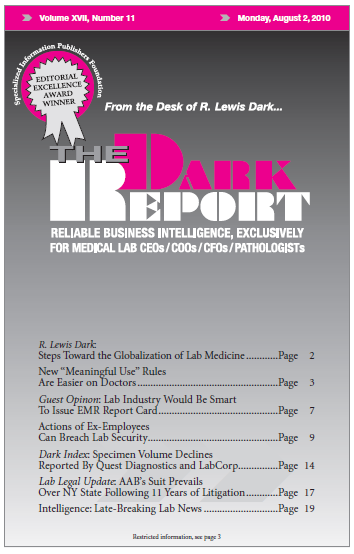CEO SUMMARY: The federal government will spend $20 billion over the next four years to encourage every physician to use an electronic medical record (EMR) system. For labs, this increase in connectivity represents a significant marketing opportunity. However, the new federal rules on meaningful use of EMRs released last month may complicate the situation for …
New “Meaningful Use” Rules Are Easier on Docs Read More »
To access this post, you must purchase The Dark Report.


